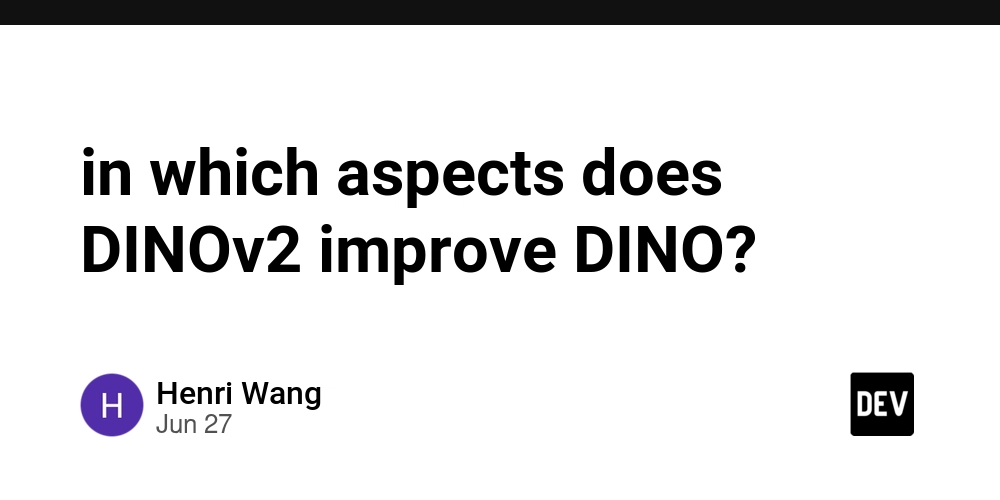in which aspects does DINOv2 improve DINO?
How DINOv2 Improves Upon DINO
DINOv2 (Meta AI, 2023) is a major upgrade over the original DINO (2021), focusing on scaling, efficiency, and generalization in self-supervised learning (SSL) for vision. Here’s a breakdown of key improvements:
1. Better Pretraining Data & Scale
| Aspect | DINO (2021) | DINOv2 (2023) |
|---|---|---|
| Dataset Size | Limited (e.g., ImageNet-1k) | LVD-142M (142M curated images) |
| Data Diversity | Mostly natural images | Includes satellite, medical, sketches, etc. |
| Pretraining Efficiency | Computationally heavy | Optimized pipeline (30× faster than DINO) |
✅ Impact:
- Learns richer visual features due to larger, more diverse data.
- Reduces pretraining time significantly.
2. Improved Architecture & Training
| Component | DINO | DINOv2 |
|---|---|---|
| Backbone | ViT-S/B (smaller models) | ViT-g/14 (1B+ params) |
| Knowledge Distillation | Single self-distillation | Multi-stage distillation (teacher → student) |
| Training Objective | Standard SSL (DINO loss) | iBOT loss + masked modeling (like MAE) |
✅ Impact:
- Larger models (ViT-g) capture finer-grained features.
- Combines DINO + iBOT + MAE ideas for better feature learning.
3. Enhanced Self-Supervised Learning (SSL)
DINOv2 introduces:
- iBOT Loss: Extends DINO with masked image modeling (MIM), improving local feature learning.
- Efficient Clustering: Better handling of multi-crop views (reduces redundancy).
- Regions-of-Interest (RoI) Focus: Learns object-centric features without manual labels.
✅ Impact:
- Better at fine-grained recognition (e.g., texture, object parts).
- More robust to occlusions (thanks to MIM).
4. Stronger Transfer Learning
| Task | DINO Performance | DINOv2 Improvement |
|---|---|---|
| Linear Probing (ImageNet) | ~75% | ~84% (ViT-g) |
| Few-Shot Learning | Moderate | SOTA (beats CLIP) |
| Dense Tasks (segmentation/detection) | Good | Significantly better |
✅ Impact:
- Outperforms supervised models on many tasks.
- Generalizes better to domain shifts (e.g., medical/satellite images).
5. New Capabilities
- Depth Estimation: Predicts depth maps without supervision.
- Semantic Correspondence: Matches object parts across images (useful for retrieval).
- Scalability: Works well from small (ViT-S) to giant (ViT-g) models.
6. Practical Advantages
- No need for labeled data: Fully self-supervised.
- Off-the-shelf features: Works out-of-the-box for downstream tasks.
- Efficient inference: Despite larger models, runs well on GPUs.
Summary: Key Improvements of DINOv2 Over DINO
- Larger, curated dataset (LVD-142M) → Better features.
- ViT-g architecture + multi-stage distillation → Higher accuracy.
- Combined SSL objectives (DINO + iBOT + MIM) → Robust local/global features.
- State-of-the-art transfer learning → Beats DINO and CLIP on many tasks.
- New capabilities (depth estimation, semantic matching).
DINOv2 is a drop-in replacement for DINO with superior performance across the board.

